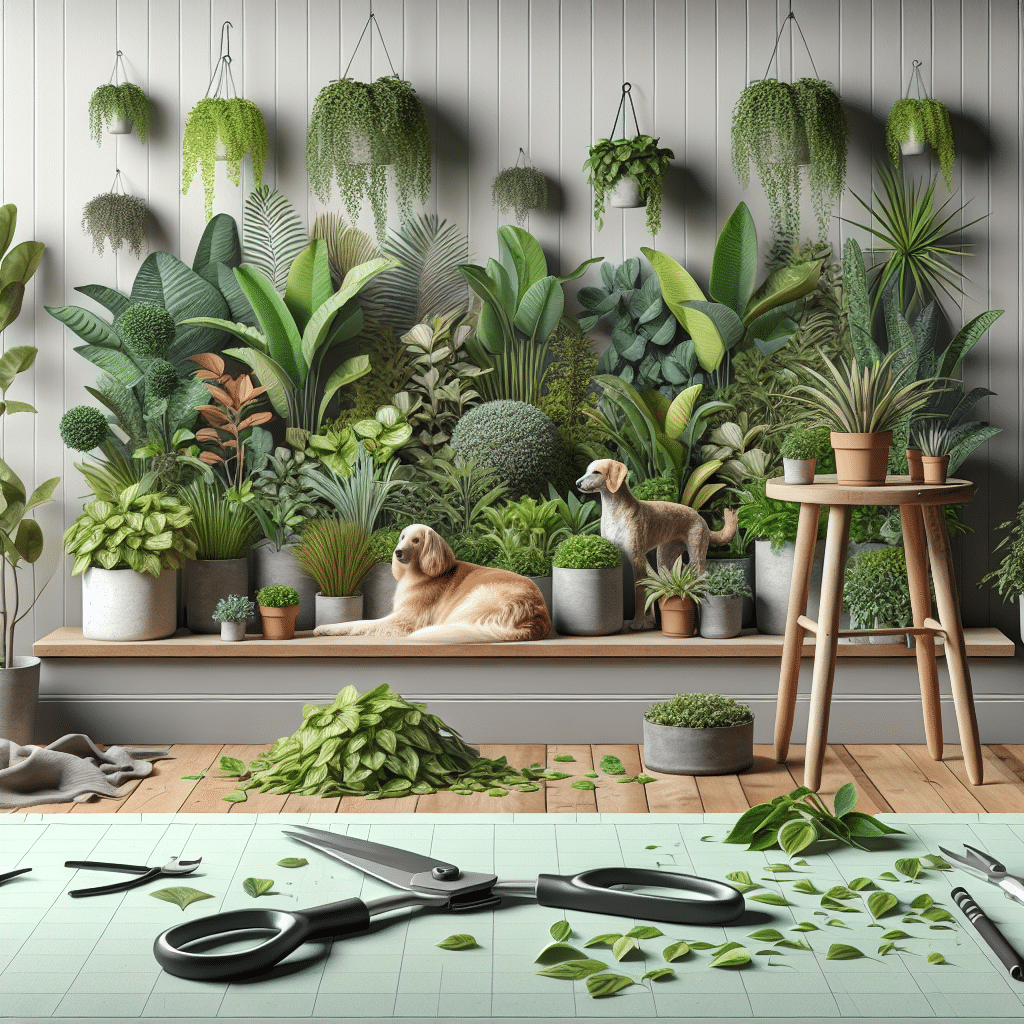Understanding Pruning and Trimming
Pruning and trimming are vital for maintaining the health and aesthetics of your plants. Pruning involves the removal of specific branches, stems, or roots to encourage growth, improve air circulation, and eliminate disease-infested parts. Trimming generally involves the cosmetic shaping of plants to enhance their visual appeal. When it comes to pet-safe plants, extra care is required to ensure the methods used do not harm your furry companions.
Benefits of Pruning Pet-Safe Plants
- Encourages Healthy Growth: Regular pruning removes dead or diseased plant parts, allowing for better nutrient uptake.
- Reduces Pests and Diseases: By eliminating diseased or dying branches, you limit areas where pests can thrive.
- Improves Aesthetics: Well-maintained plants look more visually appealing and can enhance your home’s decor.
- Allows Better Airflow: Thinning out dense plants can boost airflow, helping prevent mold and mildew growth.
Identifying Pet-Safe Plants
Before pruning, ensure your plants are safe for your pets. Common pet-safe plants include:
- Spider Plant (Chlorophytum comosum): Non-toxic and easy to care for, spider plants thrive in indirect sunlight.
- Boston Fern (Nephrolepis exaltata): A lush and attractive option, this fern is safe for pets and thrives in humid conditions.
- Areca Palm (Dypsis lutescens): Known for its feathery fronds, it’s a great indoor decorative plant and safe for animal companions.
- Bamboo Palm (Chamaedorea seifrizii): This palm removes toxins from the air and is a pet-friendly option that requires little upkeep.
Tools Needed for Pruning
- Pruning Shears: Essential for cutting through small to medium branches, select high-quality scissors for neater cuts.
- Loppers: Use for thicker branches that cannot be managed by pruning shears. They provide leverage and power for cleaner cuts.
- Hand Saw: Necessary for larger branches, ensuring you use a saw designed for ornamental plants to avoid damage.
- Gardening Gloves: Protect your hands from sharp plant parts and potential irritants.
- Disinfectant: Keep your tools sterilized with alcohol or bleach solution to prevent the transfer of diseases between plants.
Timing for Pruning
Timing is crucial for effective pruning. The best time to prune most pet-safe plants is during their dormant season, typically late winter to early spring.
- Spring Bloomers: Plants that bloom in the spring should be pruned immediately after flowering to encourage new growth.
- Summer Bloomers: For plants that bloom in the summer, prune them in early spring before they begin to bud.
Basic Pruning Techniques
- Deadheading: This involves removing spent flowers to encourage new blooms and prevent seed formation. It enhances the overall appearance of flowering plants.
- Thinning: Remove excess branches to improve air circulation and light penetration. This is crucial for bushy plants.
- Cutting Back: For plants with overgrown stems or branches, cut back to a healthy bud, promoting dense growth.
- Rejuvenation Pruning: For older plants, sometimes drastic cutting back is necessary to stimulate new growth. Trim back to about one-third of the plant’s height.
Trimming vs. Pruning
- Trimming: Often done to maintain appearance. It focuses on the outer foliage and can involve shaping.
- Pruning: Focuses more on the plant’s health and structural integrity, generally involving more significant cuts.
Frequently Trimming Pet-Safe Plants
- Pothos (Epipremnum aureum): Trim to encourage fuller growth. This vine can be propagated easily by cuttings.
- Maranta (Prayer Plant): Trim through leaves to encourage healthy new growth. Monitor leaf color for indications of stress.
- Calathea: Trim damaged leaves without cutting into the stem to maintain the plant’s health and appearance.
- Peace Lily (Spathiphyllum): Remove yellowing leaves and wilted flowers to keep the plant looking lush.
Post-Pruning Care
After pruning or trimming, providing your plants with the right care is vital for recovery.
- Watering: Ensure your plants are adequately watered post-pruning. Water deeply but do not overwater.
- Fertilization: Refrain from fertilizing immediately after cutting. Wait a few weeks until the plant shows new growth.
- Monitoring: Keep an eye on the plants for signs of distress or disease after pruning. Adjust care as needed.
Signs Your Plants Need Pruning
Recognize the following indicators that it may be time to prune your pet-safe plants:
- Legginess: If your plant appears overly stretched out, it’s typically a sign of inadequate light or unbalanced growth.
- Overcrowding: Plants competing for space may become weak. Pruning helps them regain the space they need.
- Poor Health: Yellowing leaves or infestations signal the need for a trim to remove unhealthy parts.
Common Mistakes to Avoid
- Pruning at the Wrong Time: Avoid pruning during the active growing season for non-blooming plants, as it can impede new growth.
- Using Dull Tools: Always ensure tools are sharp. Dull tools may crush rather than cut, leading to potential disease entry points.
- Over-Pruning: Removing too much foliage can shock the plant. Aim to prune only 30% of the plant at a time.
- Neglecting Cleaning: Post-pruning, clean your tools to minimize the risk of disease spread.
By following these comprehensive pruning and trimming techniques, you’ll ensure a lush, vibrant indoor garden that is safe for both your plants and your beloved pets. Working with pet-safe plants allows you to enjoy the beauty of nature in your home without worrying about your furry friends’ safety.
